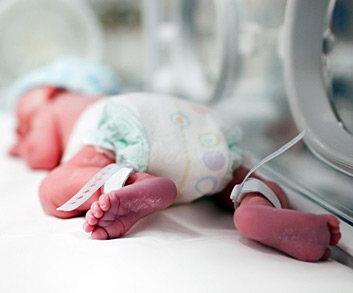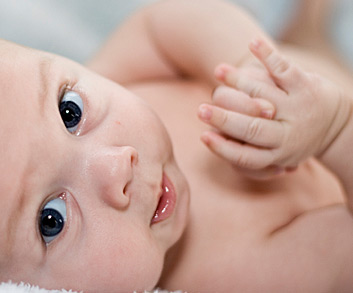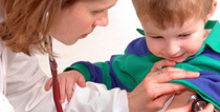Internal mini form
Contact Us Today
Although it is not the most common cause of Cerebral Palsy, cerebral dysgenesis occurs after conception and can have variable effects on children depending on the severity of the brain malformation or abnormal brain development. If a parent suspects a child is not developing in a typical fashion, it’s a condition to be considered, or ruled out, by a neurologist.
What is cerebral dysgenesis?
Brain malformation – abnormal brain development
Cerebral dysgenesis is abnormal brain development, also known as brain malformation, which differs from the other three causes of Cerebral Palsy which involve brain injury. Brain malformation is the result of:
- a brain that did not fully develop
- a brain that grew abnormally
- a brain that experienced incomplete division
- a brain that developed with incomplete organization
Billions of cells, and various types of cells, continuously form and move to distinct locations during brain development; skull development is occurring, as well.
Any event that interrupts brain development can result in malformed or missing areas of the brain. This can result in loss of brain function. Brain malformation can vary in severity; defects of greater severity lead to one, or a combination of, conditions such as epilepsy, Cerebral Palsy, intellectual impairment, and sensory impairment.
When does cerebral dysgenesis occur?
The brain begins developing almost immediately after conception. A damaging event can occur at any time during fetal development to cause brain malformation. While the first 20 weeks of gestation are especially critical, any insult to the brain can have serious repercussions.
What are the risk factors and causes of cerebral dysgenesis?
Incidents of genetic mutations, infections, fever, and trauma all increase the likelihood of developing cerebral dysgenesis, but the presence of one or more of these risk factors does not mean a child will develop the disorder; it merely identifies cause for concern.
Genetic mutations in the early stages of brain development can multiply, as one “damaged” cell can replicate many times over.
Infection is known to be a serious contributing risk factor. One of the body’s methods for fighting off infection is to produce cytokines – which will ultimately pass through the blood and nervous system of the fetus. Cytokines may increase the developing brain’s susceptibility to asphyxia and also cause inflammation, which can damage the nervous system.
Certain infections are known as risk factors for development of cerebral dysgenesis and other brain impairments. These include:
- Cytomegalovirus
- Rubella (German measles)
- Herpes simplex virus
- Syphilis
- Toxoplasmosis
- Varicella (chicken pox virus)
Fever during pregnancy can also instigate a potentially damaging inflammatory response. Various types of traumas can interrupt proper brain development.
How is cerebral dysgenesis diagnosed?
Neuroimaging techniques such as cranial ultrasound, CT scans, and MRIs are primarily used after birth to view the condition of the brain. Recent research has led to the discovery of certain genes that may contribute to the causal pathways. Therefore, genetic testing and chromosome analysis may be beneficial.
The degree of impairment varies. After birth, certain signs may lead doctors to suspect cerebral dysgenesis, including:
- Childhood seizures
- Decreased muscle tone (hypotonia)
- Delayed crawling milestones
- Delayed developmental milestones
- Delayed walking milestones
- Failure to thrive
- Increased or decreased head size
- Low APGAR score
- Mental deficiency
- Poor head control
- Poor trunk control
- Psychomotor cognitive impairment
- Roving eye movements
How is cerebral dysgenesis treated?
Treatment for cerebral dysgenesis focuses on managing symptoms the child experiences, as Cerebral Palsy is not curable. Treatment protocols involve various physical and occupational therapies dependent on symptoms and severity of symptoms.
Early intervention is regarded as a valuable service, especially as the brain continues to develop after birth. It may be possible for the brain to forge new pathways and reduce the severity of impairments.
How is cerebral dysgenesis prevented?
Since cerebral dysgenesis is the result of brain malformation, the likelihood of developing the condition may be reduced by minimizing potential risk factors.
Cause: Clarifying terminology
Because the terminology used is so specific, yet remarkably similar, terms such as brain defect, brain malformation and brain lesion can seem confusing. It is helpful to know the difference between the terms when attempting to understand the cause of cerebral palsy.
Brain development begins shortly after conception. A relatively small number of cells divide and multiply into billions of cells. A small strip of tissue rolls into a neural tube. One end develops into the brain, the other into the spinal cord. Throughout, different types of cells form, group, and migrate to form various regions of the brain. The brain is considered fully developed two to five years after birth.
Brain defects are irregularities in the brain structure that typically cause impairment. Defects can occur from malformation, injury, illness or disease. The degree of impairment often is linked to the severity of damage. A brain sometimes compensates for defects, in essence, by “rewiring” to bypass or compensate for damaged areas. For this reason, beginning treatment as early as possible is typically recommended.
Brain malformations are defects that occur through abnormal development of the brain. Although defects can occur anytime during fetal development, in the first 20 weeks the infant is most vulnerable; any malformation that occurs while the neural tube is forming can have permanent consequences. Brain malformations may result in undeveloped areas, abnormal growth, malformation, or improper brain division into hemispheres and lobes.
Brain lesions are defects that occur from injury or disease. The cause of brain lesions during fetal development include bleeding in the brain, infections, toxins, asphyxia, and many others. Lesions typically result from an incident or event that causes brain tissue to die. Holes, which often fill with liquid, are left behind to form cysts.

Four types of brain injury or malformation that cause Cerebral Palsy
Cerebral Palsy is caused by brain injury or brain malformation that occurs before, during, or immediately after birth while the infant’s brain is under development. But how a brain injury affects a child’s motor functioning and intellectual abilities is highly dependent on the nature of a brain injury, where the damage occurs, and how severe it is.
Cause
Periventricular Leukomalacia
Damage to the white matter tissue in the brain
Periventricular Leukomalacia
Intraventricular Hemorrhage
Brain hemorrhage
Intraventricular Hemorrhage
Hypoxic-Ischemic Encephalopathy
Lack of oxygen to the brain, asphyxia, or intrapartum asphyxia
Hypoxic-Ischemic Encephalopathy
Cerebral Dysgenesis
Brain malformation or abnormal brain development.
Cerebral Dysgenesis

Were you or your child at risk – before, during or after your child’s birth?
Cerebral Palsy risk factors are events, substances or circumstances that increase the chances of a child developing Cerebral Palsy. They can be avoidable, or unavoidable. A risk factor does not ensure a child will develop Cerebral Palsy; it means chances are higher than if that risk factor was not present. Likewise, the absence of risk factors does not ensure that a child will not develop Cerebral Palsy. Have you been exposed to the following risk factors?
Cerebral Palsy Risk Factors
- Asphyxia and oxygen deprivation
- Blood type incompatibility or jaundice
- Complications of birth
- Infection
- Intrauterine growth restrictions
- Multiple births and infertility drugs
- Parental health and habits
- Placenta complications
- Premature birth
- Traumatic brain damage
Risk factors vs. risk factor causal pathways
A risk factor does not ensure a child will develop Cerebral Palsy; it means chances are higher than if that risk factor was not present. Likewise, the absence of risk factors does not ensure that a child will not develop Cerebral Palsy.
Risk Factors and Risk Factor Causal Pathways
The Cerebral Palsy Risk Factor Checklist
Any exposure to risk factors prior to conception and during pregnancy should be immediately discussed with a doctor in order to treat and minimize risk. The Cerebral Palsy Risk Factor Checklist helps parents determine if they may have been exposed to risk factors for Cerebral Palsy.
The Cerebral Palsy Risk Factor Checklist








